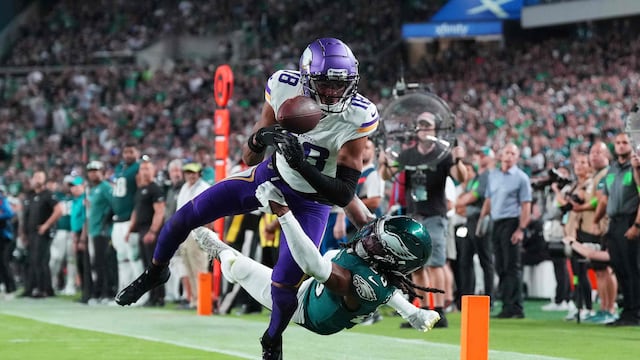With the league having altered the rules, it’s important you all understand exactly what a “touchback” is in the NFL and how it works.

What is a touchback in the NFL? When does it happen?

We’ve seen it time and time again during plays where one team is forced to punt. The kicking team will attempt to get the ball as deep as possible into their opponent’s territory, in the hope of pinning them back, thereby making their uphill climb that much steeper. However, we’ve also seen this backfire on countless occasions. Instead, teams can sometimes find themselves in the end zone, which in turn leads to the touchback.
Xavier Gipson just got BAILED OUT because the punt was called a touchback... pic.twitter.com/lb1jbz8xeX
— Arye Pulli (@AryePulliNFL) November 11, 2025
So, let’s try to keep this simple. According to NFL rules there are different scenarios for a touchback now. Let’s look first how it happens in regular play and then a whole new scenario opens up with the league’s new kickoff rule.
What is a touchback?
Here’s the NFL definition:
Touchback When a player downs the ball after a free kick behind his team’s own goal line ... of the end zone, the play is dead and the ball is spotted on the 25-yard line.
NFL
How does the touchback occur?
Here’s how this works in situations other than a kick off. If a kicked ball as a result of a punt or missed field goal, touches the ground in the opposing team’s end zone, rolls out of the back-end zone or touches the goal post, the play is ruled a touchback and the ball is subsequently spotted on the 25-yard-line.
Incidentally, a touchback can also be called if the ball is fumbled through the end zone. Understandably, this is not the norm and when it does occur, it has often led to confusion for fans, but it is common enough that it has had to be addressed.
A perfect example would be this season when Cardinals running back Emari Demercado fumbled (let go of) the ball at the goal line, which resulted in a touchback for the Tennessee Titans (see tweet below).
He let the ball go too early! Touchback! 😮
— NFL (@NFL) October 5, 2025
TENvsAZ on CBS/Paramount+https://t.co/HkKw7uXVnt pic.twitter.com/ZHxNItODj2
What changes has the NFL made?
In 2025, the rules for kickoffs have changed and according to the nfl.com rules website, these are the new instructions for kicking and receiving teams pertaining to touchbacks:
New NFL kickoff rule
- Landing zone is the area between the receiving team’s goal line and its 20-yard line.
- Any kick that hits short of the landing zone – treated like kickoff out of bounds and ball spotted at B40 yard line; play would be blown dead as soon as kick lands short of the landing zone
- Any kick that hits in the landing zone - must be returned
- Any kick that hits in the landing zone and then goes into the end zone – must be returned or downed by receiving team – if downed then touchback to B20 yard line
- Kick hits in end zone, stays inbounds - returned or downed – if downed then touchback to B30 yard line
- Any kick that goes out of the back of the end zone (in the air or bounces) – touchback to B30 yard line
🚨LITTLE-KNOWN RULE🚨#Steelers kicked out of bounds ON PURPOSE.
— MLFootball (@MLFootball) November 3, 2025
A penalty moved the kick to 50, the #NFL rule is out-of-bounds kickoff placed 25 yards from the spot → so it was the opponent’s 25.
No return risk & gained 15 yds field position.
GENIUS.pic.twitter.com/EPeLjubkU4
Results of these changes
Now the “dynamic kickoff” requires kickers to kick the ball in to the “landing zone” (between the receiving team’s goal line and it’s 20-yard line) to avoid touchbacks. The advantage of this new rule is that there are more attempts at returning a kick off and receivers are less exposed to dangerous hits because the defense doesn’t get to move until the ball is caught.
Related stories
If a kick falls short of the landing zone, play would be blown dead and it will be spotted on the 40 yard line. Any kick that hits in the landing zone, must be returned. If a kick goes into the end zone and downed by the receiver, it will be a touchback and placed on the 20-yeard line. If the ball goes to the end zone and is not downed or touched by the receiving team, it will be placed on the 30-yard line.
Got it? Not easy to understand, but either is the NFL’s explanation.


Complete your personal details to comment